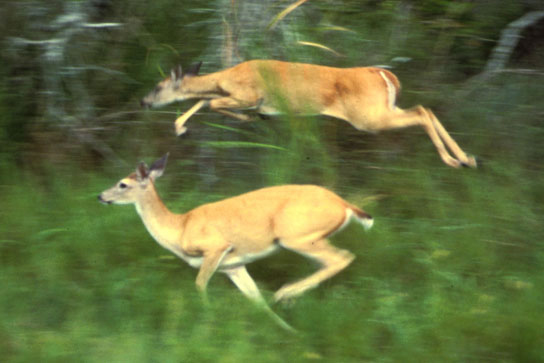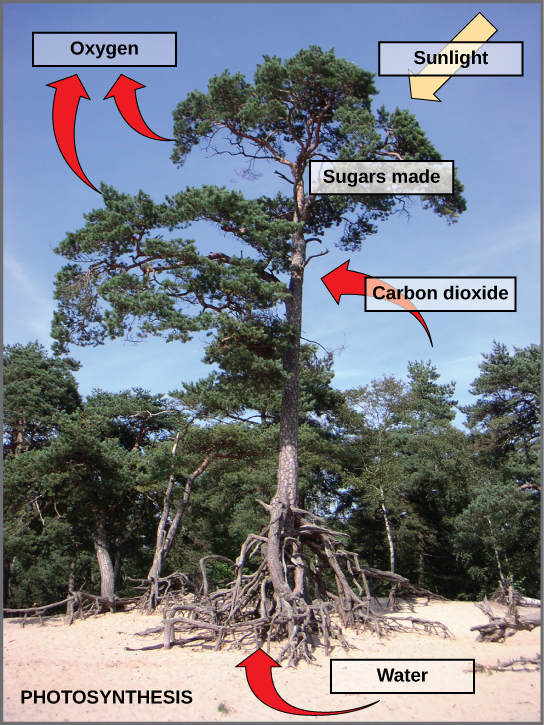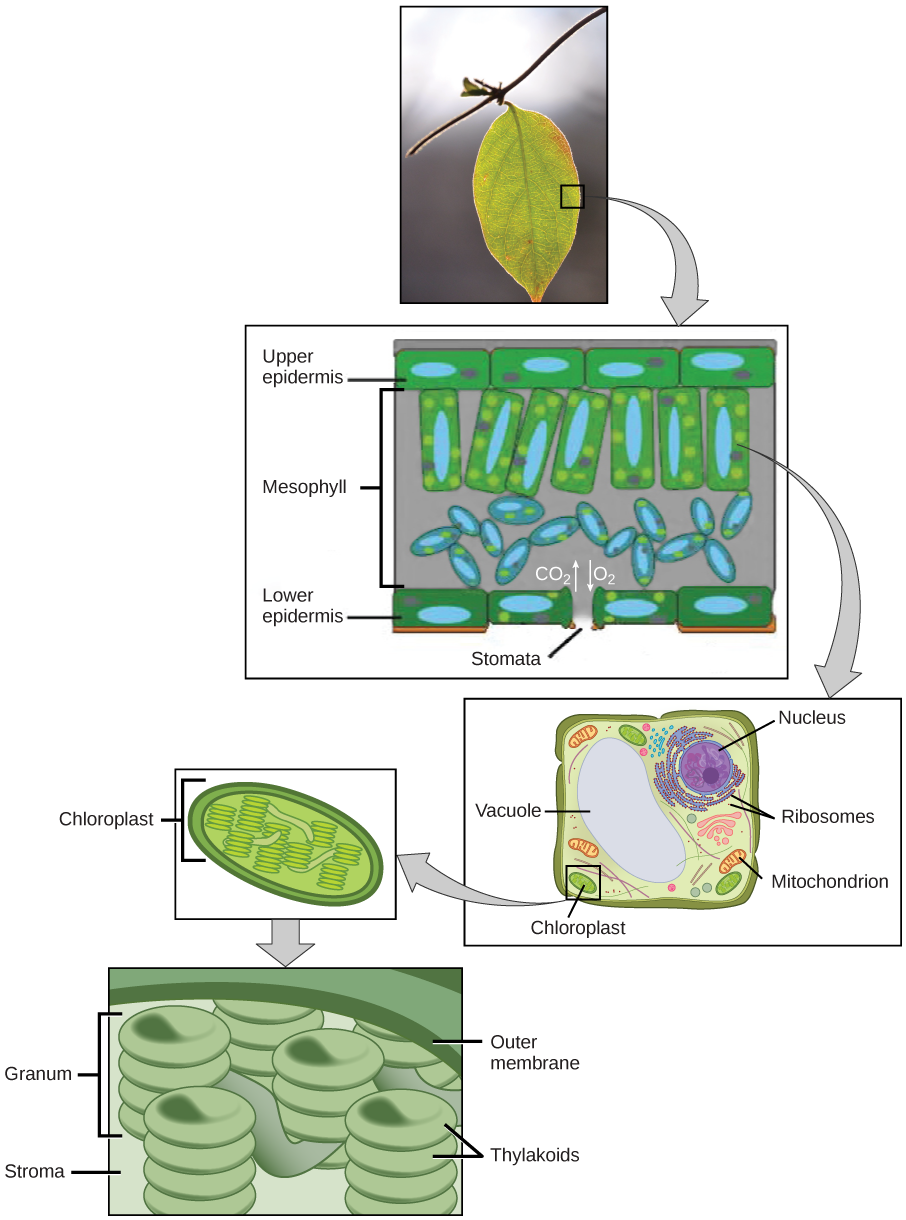| << Chapter < Page | Chapter >> Page > |
All living organisms on earth consist of one or more cells. Each cell runs on the chemical energy found mainly in carbohydrate molecules (food), and the majority of these molecules are produced by one process: photosynthesis. Through photosynthesis, certain organisms convert solar energy (sunlight) into chemical energy, which is then used to build carbohydrate molecules. The energy used to hold these molecules together is released when an organism breaks down food. Cells then use this energy to perform work, such as cellular respiration.
The energy that is harnessed from photosynthesis enters the ecosystems of our planet continuously and is transferred from one organism to another. Therefore, directly or indirectly, the process of photosynthesis provides most of the energy required by living things on earth.
Photosynthesis also results in the release of oxygen into the atmosphere. In short, to eat and breathe, humans depend almost entirely on the organisms that carry out photosynthesis.
Click the following link to learn more about photosynthesis.
Some organisms can carry out photosynthesis, whereas others cannot. An autotroph is an organism that can produce its own food. The Greek roots of the word autotroph mean “self” ( auto ) “feeder” ( troph ). Plants are the best-known autotrophs, but others exist, including certain types of bacteria and algae ( [link] ). Oceanic algae contribute enormous quantities of food and oxygen to global food chains. Plants are also photoautotrophs , a type of autotroph that uses sunlight and carbon from carbon dioxide to synthesize chemical energy in the form of carbohydrates. All organisms carrying out photosynthesis require sunlight.

Heterotrophs are organisms incapable of photosynthesis that must therefore obtain energy and carbon from food by consuming other organisms. The Greek roots of the word heterotroph mean “other” ( hetero ) “feeder” ( troph ), meaning that their food comes from other organisms. Even if the food organism is another animal, this food traces its origins back to autotrophs and the process of photosynthesis. Humans are heterotrophs, as are all animals. Heterotrophs depend on autotrophs, either directly or indirectly. Deer and wolves are heterotrophs. A deer obtains energy by eating plants. A wolf eating a deer obtains energy that originally came from the plants eaten by that deer. The energy in the plant came from photosynthesis, and therefore it is the only autotroph in this example ( [link] ). Using this reasoning, all food eaten by humans also links back to autotrophs that carry out photosynthesis.

Photosynthesis requires sunlight, carbon dioxide, and water as starting reactants ( [link] ). After the process is complete, photosynthesis releases oxygen and produces carbohydrate molecules, most commonly glucose. These sugar molecules contain the energy that living things need to survive.

The complex reactions of photosynthesis can be summarized by the chemical equation shown in [link] .

In plants, photosynthesis takes place primarily in leaves, which consist of many layers of cells and have differentiated top and bottom sides. The process of photosynthesis occurs not on the surface layers of the leaf, but rather in a middle layer called the mesophyll ( [link] ). The gas exchange of carbon dioxide and oxygen occurs through small, regulated openings called stomata .
In all autotrophic eukaryotes, photosynthesis takes place inside an organelle called a chloroplast . In plants, chloroplast-containing cells exist in the mesophyll. Other types of pigments are also involved in photosynthesis, but chlorophyll is by far the most important.

On a hot, dry day, plants close their stomata to conserve water. What impact will this have on photosynthesis?
The process of photosynthesis transformed life on earth. By harnessing energy from the sun, photosynthesis allowed living things to access enormous amounts of energy. Because of photosynthesis, living things gained access to sufficient energy, allowing them to evolve new structures and achieve the biodiversity that is evident today.
Only certain organisms, called autotrophs, can perform photosynthesis; they require the presence of chlorophyll, a specialized pigment that can absorb light and convert light energy into chemical energy. Photosynthesis uses carbon dioxide and water to assemble carbohydrate molecules (usually glucose) and releases oxygen into the air. Eukaryotic autotrophs, such as plants and algae, have organelles called chloroplasts in which photosynthesis takes place.

Notification Switch
Would you like to follow the 'Environmental biology' conversation and receive update notifications?